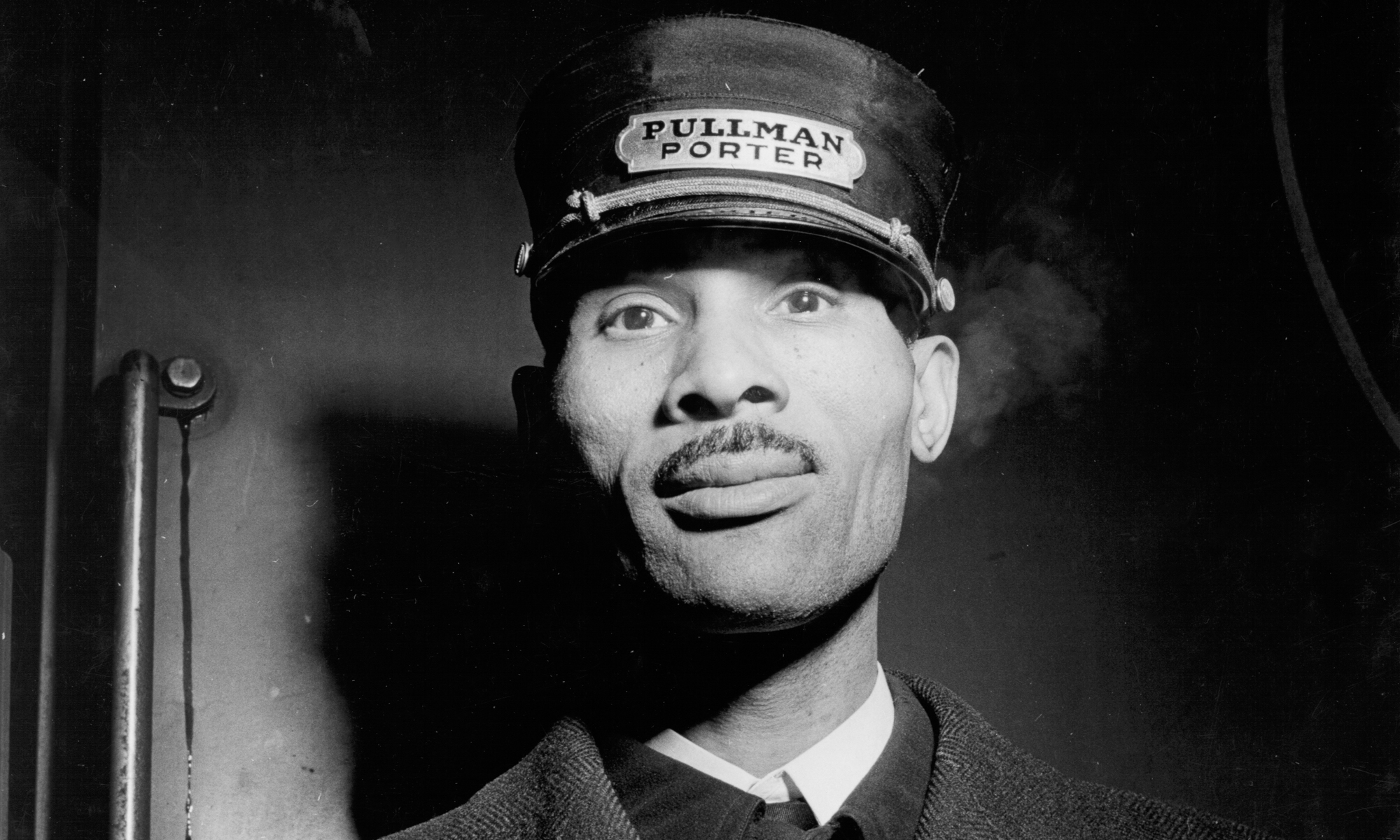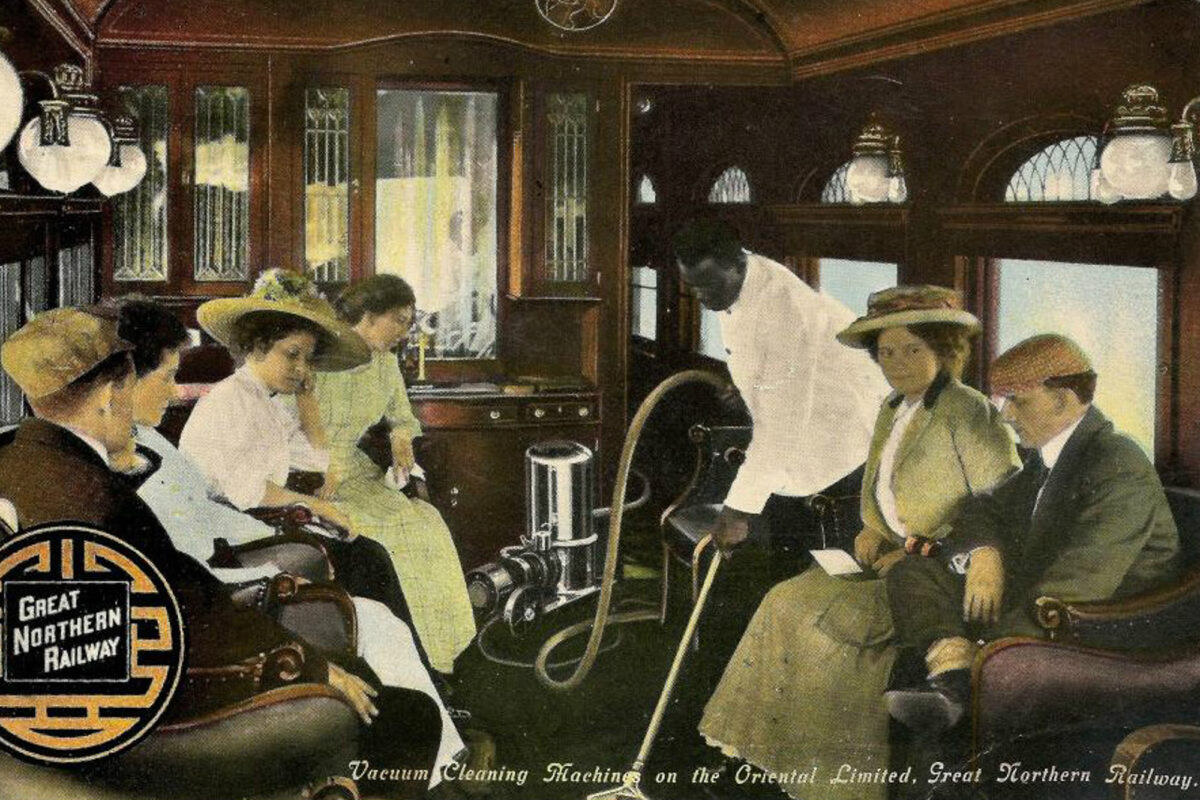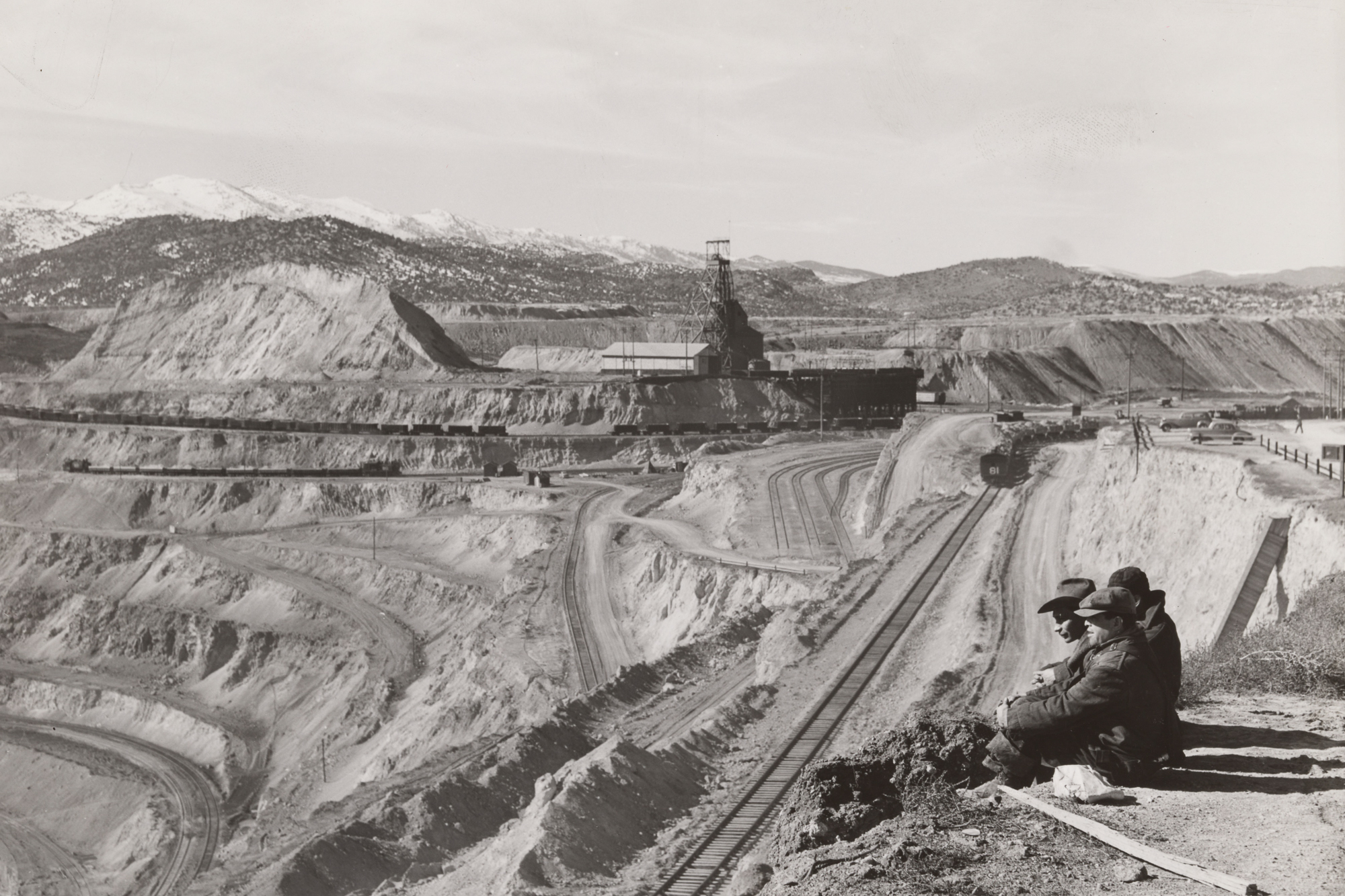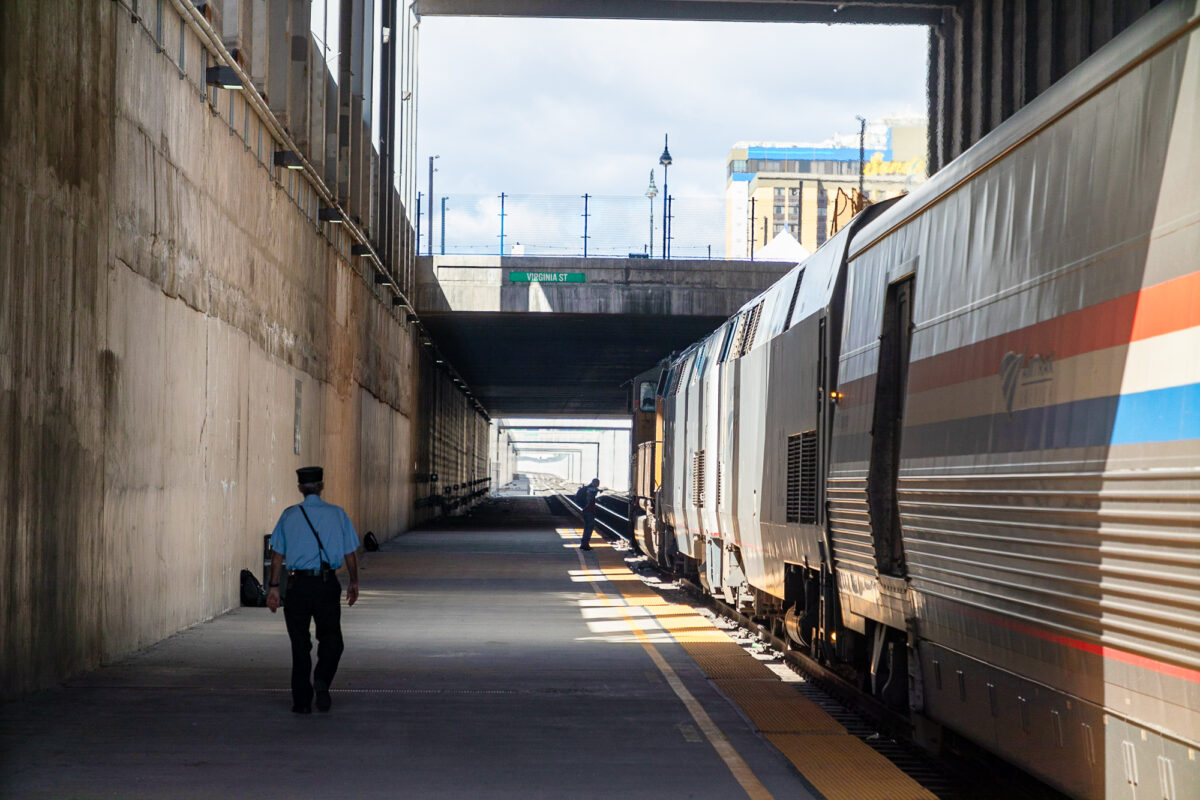Behind Nevada’s rail revival, a long history of dangerous work, hard-won labor protections

Amtrak passenger trains that once traveled from Las Vegas to Salt Lake City, Utah, with a stop in Caliente, Nevada, before the service ended in the ’90s because of budget cuts, might reopen in the next five to seven years — if the project can take advantage of some of the $66 billion for U.S. railroad systems made available by the 2021 passage of the Infrastructure Investment and Jobs Act.
“It [could] provide a mode of transportation, giving people in Clark County access to the major population centers east of Las Vegas, all the way to Boston,” Wesley Harper, a contract consultant for Amtrak, said in a late-August interview with The Nevada Independent. “If you don't have a car, or a car that you can reliably drive for thousands of miles, and if you don't have the money for an airline ticket, you now have a way to get from A to B. And I think about the major benefit it is for folks that have difficulty in transportation, like the disabled.”
But these tracks, which reached Las Vegas in 1905, were built before the officials making decisions on Capitol Hill today were even born. The route was made possible by the toils of a diverse group of laborers whose efforts later drove improvements in the working conditions for some of those who came after them and prompted the creation of Labor Day itself.
By 1915, the transcontinental railroad system connected the states through more than 254,000 miles of steel, according to a chronicle by the American Railroad Association. Ted Kornweibel, author of Railroads in the African American Experience: A Photographic Journey, found that “the entire Southern railroad network” was built through dangerous work performed “almost exclusively” by enslaved Africans, including Black women, who were “owned, hired or rented” by railroad companies.
According to History.com, Chinese immigrants dominated the railroad labor force in the West, followed by European immigrants from Ireland, Cornwall, Germany, Italy and Wales.
Kornweibel found that after the Civil War, freed Black people also moved westward in search of work on railroads to evade “dead-end” sharecropping or domestic jobs in the South.
Historians point to strikes among railroad workers as a key driver for Congress and President Grover Cleveland to declare Labor Day a federal holiday in 1894, according to an interactive history created by the Washington Post.


Railroad labor strikes and the power they have over the economy have shaped American history and workers’ rights since the Great Railroad Strike of 1877, sometimes called the Great Upheaval, when railroad workers barred train engines from moving in West Virginia. According to the Britannica Encyclopedia, the strike, which led to 100 deaths and about 1,000 people jailed, did not change much, was forgotten about in a few short years and “industrialists continued cutting wages” and broke with unions.
Railroad unions continued to shape history with the Brotherhood of Sleeping Car Porters in 1928, the first major African American labor union that negotiated higher wages for Black “Pullman porters” who serviced high class passengers. Railroad unions also helped create the eight-hour workday and won rights for railroad workers to receive restroom breaks — two rights that are often associated with usual work conditions today.
Railroad workers also helped create the Silver State as we know it today, though not without dangers and discrimination for workers along the way.
Dangers on the job
The transcontinental railroad was completed in 1869, around the same time gold and silver mines were popping up around Nevada, said Christopher MacMahon, director of the Nevada State Railroad Museum in Boulder City.
The mining boom gave railroad workers more work after a lull in employment. After the construction of the transcontinental railroad came the Virginia & Truckee (or V&T) Railroad, completed in 1870 to service Comstock ore to quartz reduction mills along the Carson River; the Northern Nevada Railway, built in 1907 to accommodate Ely's booming copper economy; and the Goldfield-Bullfrog Railroad to service the then-large communities created by the gold and silver production happening in the area during the early 20th century.
"[The mines] existed in large part because of the railroads," MacMahon said during a phone interview with The Nevada Independent.

Without widespread access to automobiles, locomotives were used to bring in supplies and transport ore from the mines. But the creation of these tracks didn't come without a cost.
Though railroads didn't keep records at that time, as many as 1,000 deaths are said to have occurred building the transcontinental railroad alone.
"You came in, you did the job, and if you were injured or killed, they simply went and found someone else to replace you … There was no impetus on the employers to necessarily create a safe work environment," MacMahon said. "The railroads did establish some safety trainings to a minimal degree, but that was largely due to economic concerns. It's expensive to train someone."
There were also wars with tribal nations in which white settlers, train workers and Native Americans were killed, because the new transport disrupted the Plains Indians culture and economy, according to PBS News.
Nevada's extreme weather conditions and rough terrain didn't make laying tracks any easier. Workers, often immigrants, braved blizzards on Donner Pass and the heat of the Las Vegas Valley to create the rail system Nevadans still rely on to receive goods.
Discrimination in the workforce
During their time working on the railroads, workers who weren't white faced even worse conditions and worked the most dangerous positions on the job site, according to historians. Free and enslaved Black workers were often brakemen — a job that Kornweibel said included hopping from the roof of one train car to the next to stop them manually.
Chinese immigrant workers in Northern Nevada were assigned to leveling and preparing ground for track through canyons and mountainscapes, MacMahon said.
“[Chinese immigrants were] prepping the ground for the actual construction of the rail itself,” MacMahon said, adding that in Nevada, Chinese immigrants didn’t lay tracks as often as their white co-workers. “It's just because of racial prejudice, who was allowed to do what was considered, you know, American manly work. There is a lot of racial, sexual categorization here because of the time period that [work] was reserved largely for Irish, Cornish and Welsh immigrants.”
This discrimination led Chinese immigrants to have less social and political standing, often receiving half the pay of white laborers when they worked on the transcontinental railroad. Chinese immigrant laborers also often had to take what wages they could in order to pay back loans that helped them immigrate to the United States.
Artist Zhi Lin, who had an exhibit at the Nevada Museum of Art in Reno to honor Chinese immigrants’ labor to create the railroads in the Sierra Nevadas, pointed out Chinese immigrants are not named in photographs of rail workers on the transcontinental railroad. They are, however, mentioned on gravestones scattered among rural Nevada.
It was this disconnect that prompted Lin to create his art, saying he wants people to “try to make the connection of prosperity with the sacrifice of the hard work made by Chinese workers.”
In Las Vegas, the railroads were built later, the economy created by the railroad and mining industry attracting Mexican immigrant workers. Similar to Chinese immigrant railroad workers, Mexican immigrants' contributions to the development of the San Pedro, Los Angeles & Salt Lake Railroad in the early 20th century are not always recognized.
"I think it's important to remember, especially as we come into Labor Day, that railroads continue(d) to be built well into the 20th century," MacMahon said. "The railroads in Nevada continue to be a major employer. And it takes a lot of labor to keep that going … It takes a lot of labor to make that comfortable life possible."

Developments up for discussion
Railroads may have a renewed importance as an employer and economic driver in Nevada if proposed train projects in the state win federal funding.
Amtrak is a federal agency that operates like a corporation and creates passenger train cars, which stems from the passage of The Rail Passenger Service Act of 1970 that sought to relieve freight trains of “excessive regulations.”
This came after more than 70,000 miles of railroad tracks were in receivership, or around 30 percent, by 1937, according to the American Association of Railroads.
Harper said he met with the governor’s office and state agencies, such as the Governor Office of Economic Development and the Nevada Department of Transportation, last month hoping to get the ball rolling on the project. The meetings followed a presentation he conducted last June for Las Vegas city leaders.
“This [would] put Las Vegas on the national rail map,” Harper said. “If you're in Chicago, and you want to go to Las Vegas by train, that [would become] possible for you, where today it is not.”
Harper said the route restoration process is in phase one of three, but would not include the dangerous jobs associated with early railroad work because the tracks are already laid and technology has advanced — such as going from steam engines that burned coal, wood and oil, to diesel, which was safer for the environment. There have also been changes to the work of brakemen, who no longer need to hop atop train cars, and the use of drones that inspect railroads and bridges for defects.
As part of the first phase, Harper said Nevada and Utah submitted a joint application to the Federal Railroad Administration (FRA) seeking acceptance into its Corridor Identification and Development (Corridor ID) Program which helps guide “intercity passenger rail development throughout the country and create a pipeline of intercity passenger rail projects ready for implementation.”
Harper said he expects to hear back from the FRA by November.
He said the subsequent phases include determining the attributes of the state-supported routes such as fares, services available on rides and whether there will be trains outfitted for mountain bike racks or focused on special events such as the Super Bowl or Raiders games. The last phase could include an environmental impact study.
Harper said Amtrak has a 60-year-old blueprint that offers best practices from the many passenger routes they operate in other states, stating “we already know that three trains a day is the magic number.”
“Utah just had the NBA All Star game,” he said. “I think folks would have jumped on the train to go to that, if they thought they could — because you can drink all the way there and you can drink all the way back.”

